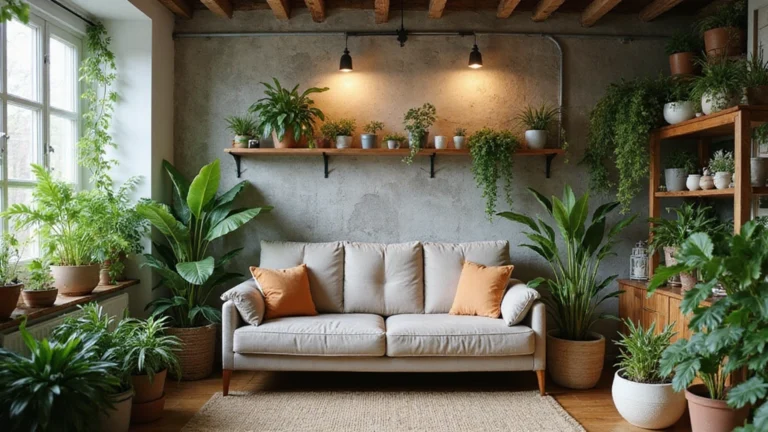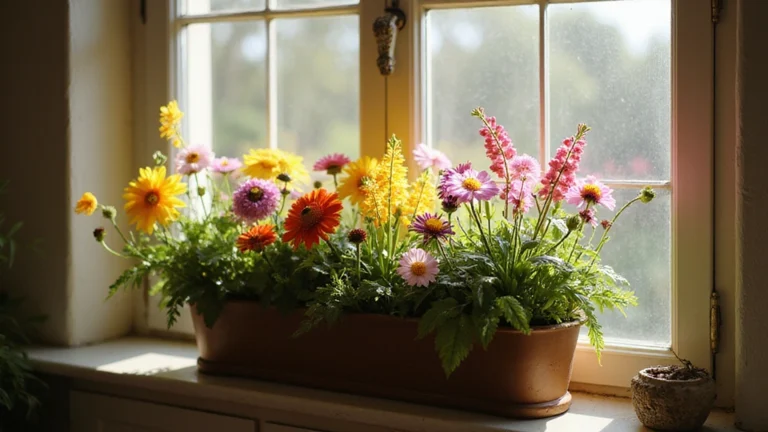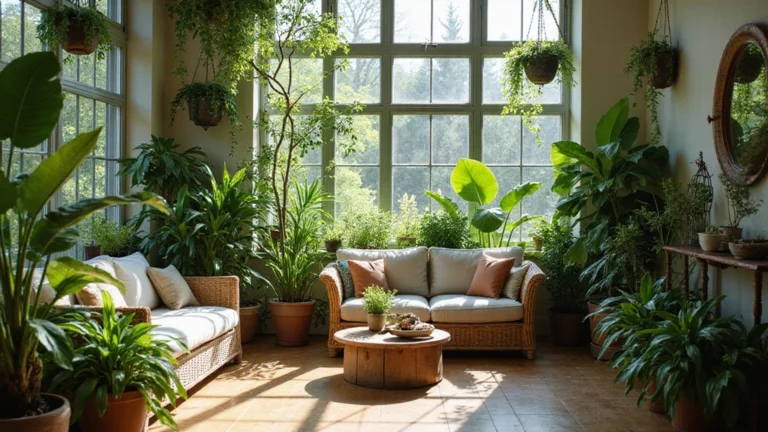Imagine turning your kitchen into a lush oasis of herbs and plants that not only beautify the space but also serve a purpose in your cooking.
With the rise of indoor edible gardening, there’s never been a better time to embrace the charm of kitchen plants.
From vibrant basil to fragrant mint, these plants can elevate your cooking and add a touch of nature to your home decor.
In this listicle, we’ll explore 23 delightful kitchen plant ideas that will inspire you to create your very own edible garden right in your kitchen! Get ready to nurture, cook, and enjoy the fresh flavors of your very own indoor garden.
1. Basil Bonanza: The King of Kitchen Herbs
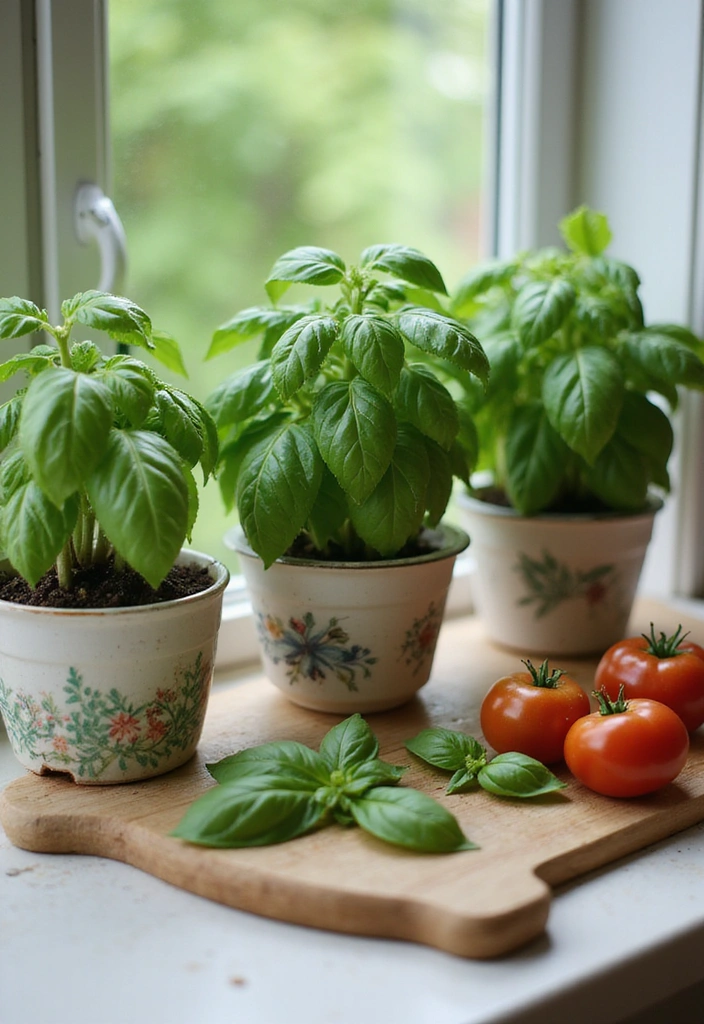
Basil is a must-have in any kitchen garden. This aromatic herb not only adds flavor to your dishes but also brings a fresh, green vibe to your space.
With varieties like sweet basil, Thai basil, and purple basil, you can create a mini basil collection right on your windowsill.
Basil thrives in sunny spots, so place it in a location that receives at least 6 hours of sunlight daily. Regular pruning helps keep it bushy and prevents it from flowering too soon.
Water it when the top inch of soil feels dry, and use a balanced fertilizer every month to ensure lush growth.
Here are a few tips to help you care for your basil:
– Pinch off the flowers as they appear to encourage more leaf growth.
– Use fresh basil in salads, pesto, or as a pizza topping for a burst of flavor.
– Consider companion planting it with tomatoes for a delightful pairing in both your garden and on your plate.
Consider pairing your basil plants in decorative pots that match your kitchen aesthetic, and watch your culinary creativity blossom!
2. Mint Magic: A Refreshing Addition
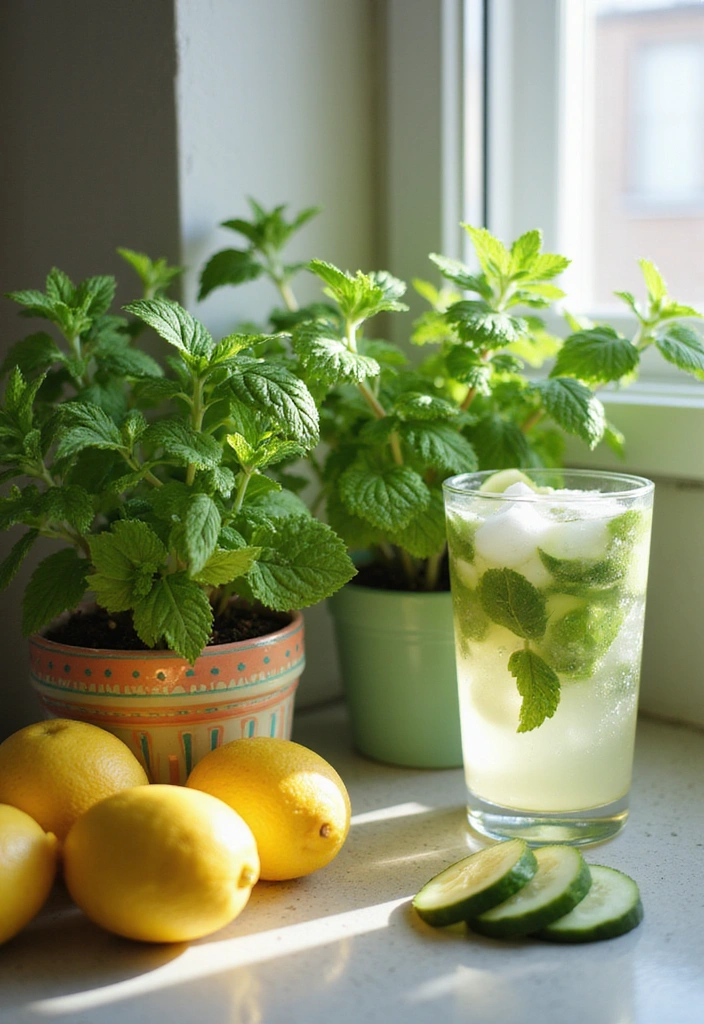
Mint is not just a refreshing herb for drinks; it’s a beautiful addition to your kitchen garden. Its vibrant green leaves and pleasant aroma can brighten any space.
Mint grows well in both pots and garden beds, but it’s important to keep it contained as it can spread quickly.
You can use mint in teas, desserts, and savory dishes, making it quite versatile. To care for your mint plants, provide them with plenty of sunlight and water them regularly to keep the soil moist but not soggy.
Here are some plant care tips for mint:
– Trim the leaves regularly to encourage bushier growth.
– Harvest the leaves in the morning for the best flavor.
– Pair mint with lemon or cucumber in drinks for a refreshing twist.
Consider using decorative pots that highlight the beauty of mint while complementing your kitchen decor. The vibrant green contrasts beautifully with colorful kitchen elements, creating a lively atmosphere.
3. Rosemary Revival: A Rustic Touch
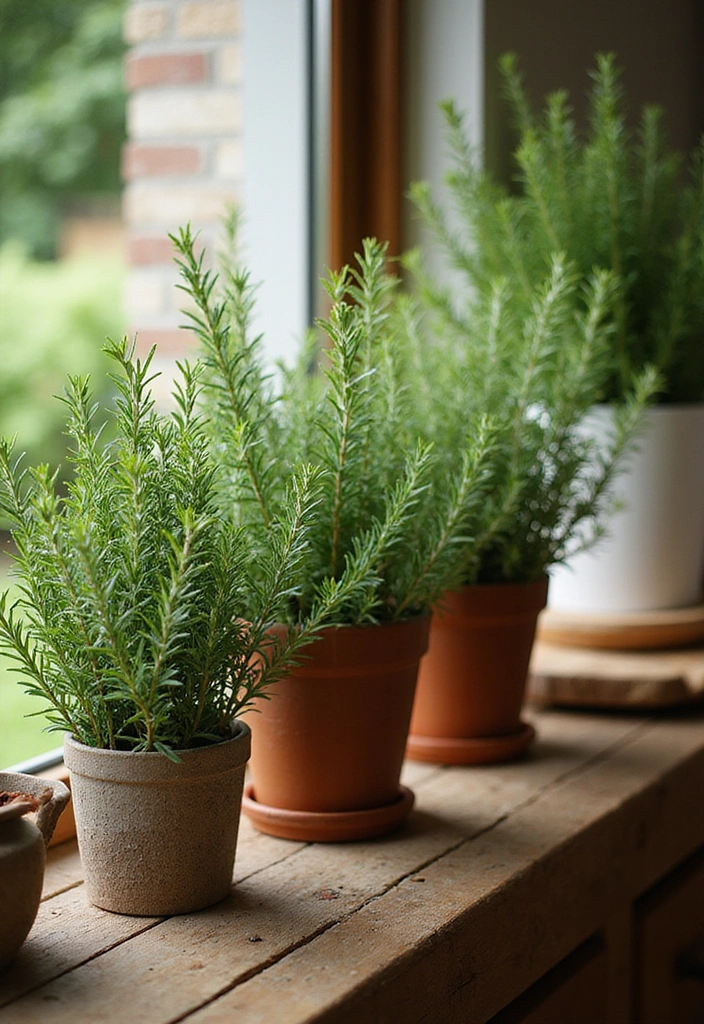
Rosemary is a stunning herb that adds both flavor and fragrance to your kitchen. Its needle-like leaves and woody stems bring an elegant rustic charm to any space.
Not only is rosemary perfect for seasoning meats and vegetables, but it also thrives indoors with the right care. Place it in a pot with good drainage and ensure it receives plenty of sunlight. Rosemary does not like overly moist soil, so let it dry out between waterings.
Here are some tips for growing rosemary:
– Prune it regularly to keep the shape tidy and encourage new growth.
– Use it fresh or dried in various dishes, including roasted potatoes and bread.
– Rosemary pairs wonderfully with thyme and oregano, making a great herb trio for your kitchen garden.
Opt for decorative pots that enhance the rustic look of rosemary, adding a touch of elegance to your kitchen décor while keeping your herbs accessible for cooking.
4. Thyme for Flavor: A Culinary Essential

Thyme is another essential herb that deserves a place in your kitchen garden. Its small, delicate leaves pack a punch of flavor that can elevate any dish.
Thyme is hardy and can thrive in various conditions, making it a great choice for indoor gardening. It requires well-drained soil and moderate sunlight, so position it in a spot that gets bright, indirect light.
To care for thyme effectively:
– Water it when the top inch of soil feels dry.
– Trim back the stems to promote new growth and prevent the plant from becoming leggy.
– Use thyme fresh in soups, stews, and roasted dishes for a delicious flavor boost.
Consider using decorative pots that allow thyme to spill over the edges, creating a beautiful, cascading effect that enhances your kitchen decor while being functional.
5. Chive Your Way to Flavor: A Mild Alternative
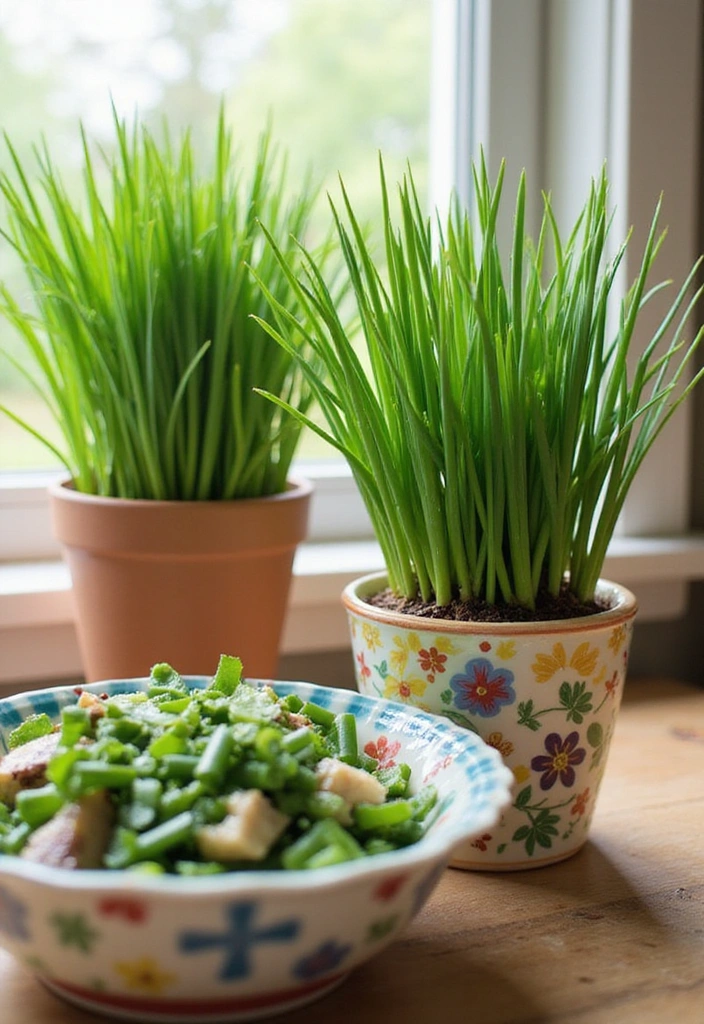
Chives are a delightful addition to your indoor garden, offering a mild onion flavor that’s perfect for salads and garnishes. Their tall, slender green stalks add visual interest to your kitchen while being incredibly easy to grow.
Chives prefer well-drained soil and a sunny spot, so make sure to place them where they can soak up the light. Regular trimming will promote new growth and prevent the chives from flowering too soon.
Here are some tips for growing chives:
– Harvest the leaves regularly to encourage bushy growth.
– Use fresh chives in omelets, dips, and as a garnish for soups and salads.
– Chives can also be grown in small pots, making them perfect for kitchen counters.
Choose decorative pots that highlight the vibrant green of chives, and make them a centerpiece of your kitchen garden. Their unique shape and color will inspire creativity in your culinary adventures.
6. Oregano Oasis: A Flavorful Companion
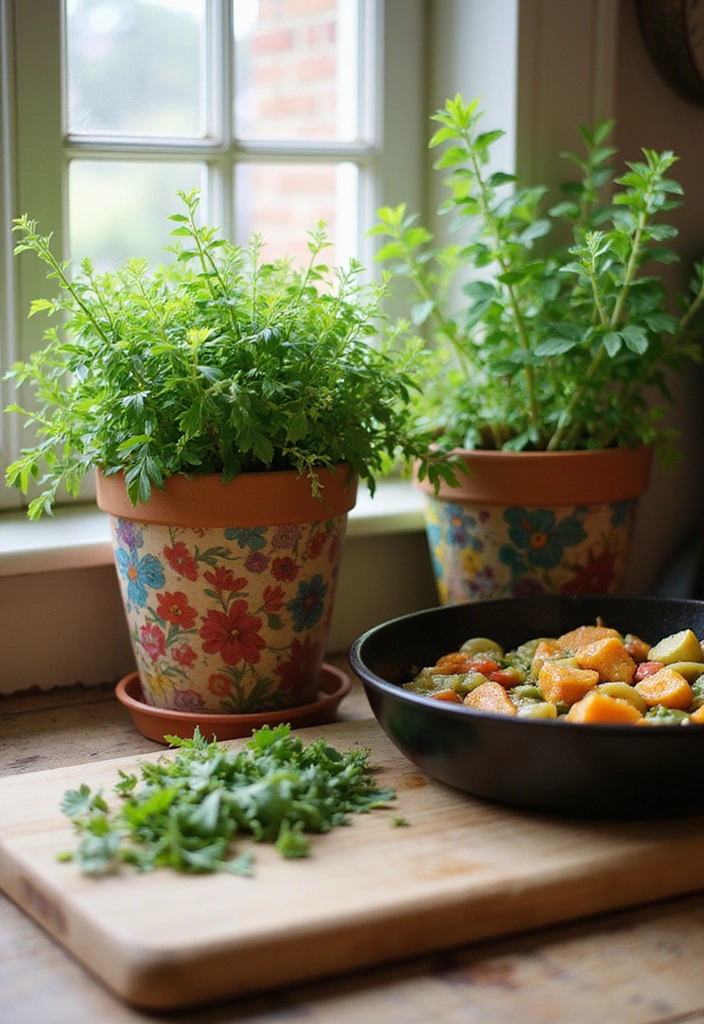
Oregano is a versatile herb that brings a Mediterranean flair to your cooking. Its robust flavor complements a variety of dishes, from pasta to pizza, making it a staple in any kitchen garden.
This herb prefers full sunlight and well-drained soil, so ensure it gets plenty of light to thrive. Water oregano when the soil feels dry, as it’s somewhat drought-tolerant.
Here are some tips for growing oregano:
– Trim the leaves regularly to encourage bushier growth and prevent flowering.
– Use fresh oregano in marinades, sauces, and grilled dishes for a flavor boost.
– Oregano pairs beautifully with basil and thyme, creating a lovely herb trio.
Opt for decorative pots that highlight the vibrant green of oregano while harmonizing with your kitchen decor, adding a touch of nature to your indoor space.
7. Cilantro Sensation: A Bold Flavor Profile
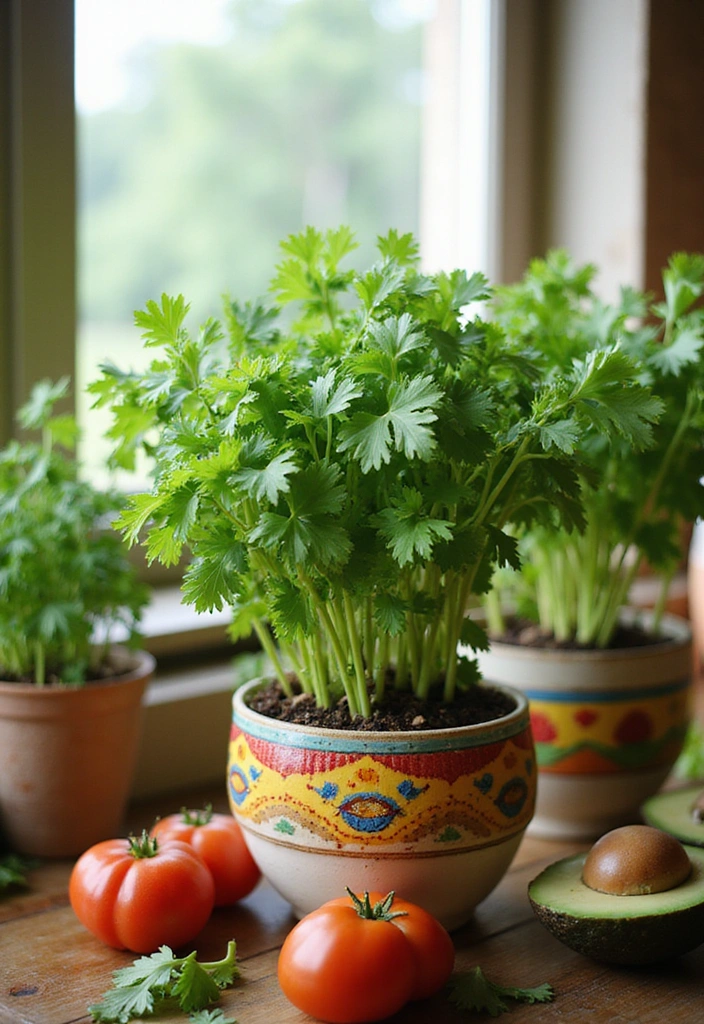
Cilantro is a bold herb that adds a unique flavor to many dishes, especially in Mexican and Asian cuisines. Its vibrant green leaves and delicate stems make it a beautiful addition to your kitchen garden.
Cilantro prefers cooler temperatures and well-drained soil, so ensure it has enough light without being scorched by the sun. Water cilantro when the soil feels dry, but avoid overwatering, as this can lead to root rot.
Here are some tips for growing cilantro:
– Harvest leaves regularly to encourage new growth.
– Use the fresh leaves in salsas, salads, and garnishes for a flavor kick.
– Cilantro can bolt quickly in hot weather, so consider planting it in cooler months.
Select decorative pots that showcase cilantro’s beauty, adding a fresh touch to your indoor edible garden while inviting culinary creativity into your kitchen.
8. Sage Serenity: A Fragrant Addition
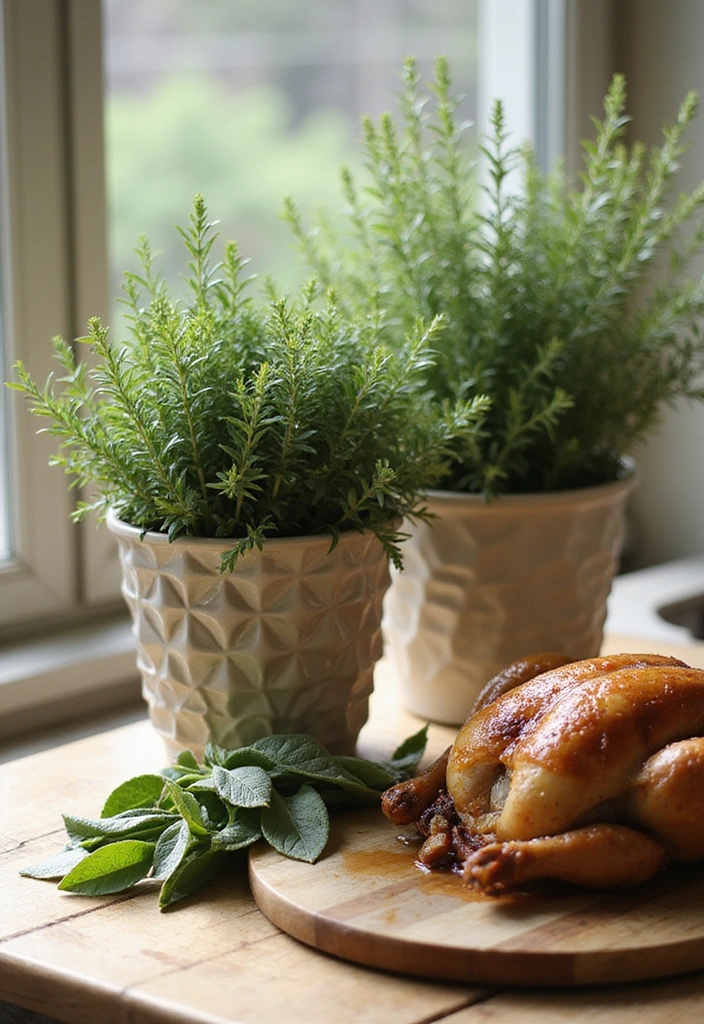
Sage is a beautiful herb with soft, silvery-green leaves that add both flavor and fragrance to your kitchen. Its earthy taste enhances a variety of dishes, making it a valuable addition to your indoor garden.
Sage thrives in well-drained soil and needs plenty of sunlight, so ensure it’s placed in a bright spot. Water it when the top inch of soil is dry, and avoid letting it sit in water.
Here are some tips for growing sage:
– Prune back the stems to encourage bushier growth and prevent flowering.
– Fresh sage is fantastic in stuffing, roasted dishes, and even teas.
– Consider pairing sage with other herbs like thyme and rosemary for a delightful culinary herb trio.
Choose decorative pots that highlight the unique color of sage, bringing a touch of elegance and style to your kitchen decor while adding functionality to your cooking.
9. Chili Pepper Passion: Spice It Up
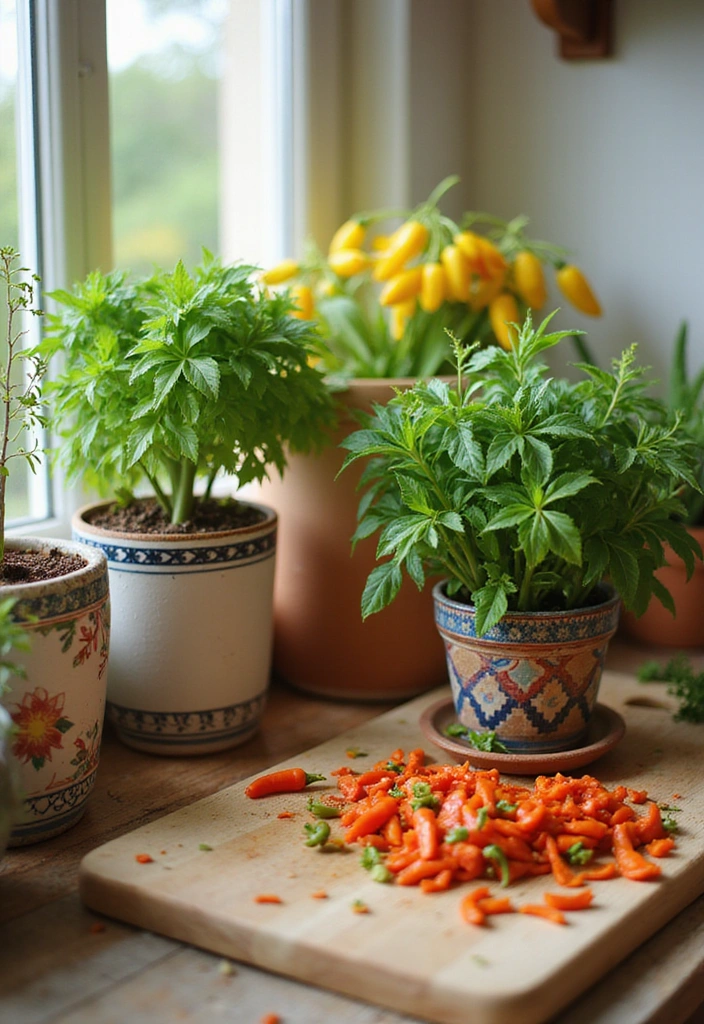
Chili peppers are a fun and colorful addition to your indoor garden, offering a spicy kick to your dishes. With a variety of types to choose from, you can enjoy different levels of heat right from your kitchen.
Chili peppers need plenty of sunlight and well-drained soil, so position them in a bright spot. Water them when the soil feels dry, and use a balanced fertilizer to help them thrive.
Here are some tips for growing chili peppers:
– Pinch off the first flowers to encourage stronger plant growth.
– Harvest peppers when they are firm and glossy for the best flavor.
– Consider growing different varieties, such as jalapeños, habaneros, and bell peppers, to create a colorful display.
Select decorative pots that reflect the vibrant colors of your chili peppers, adding a lively touch to your kitchen while inviting culinary creativity into your cooking endeavors.
10. Lavender Love: Aroma and Flavor
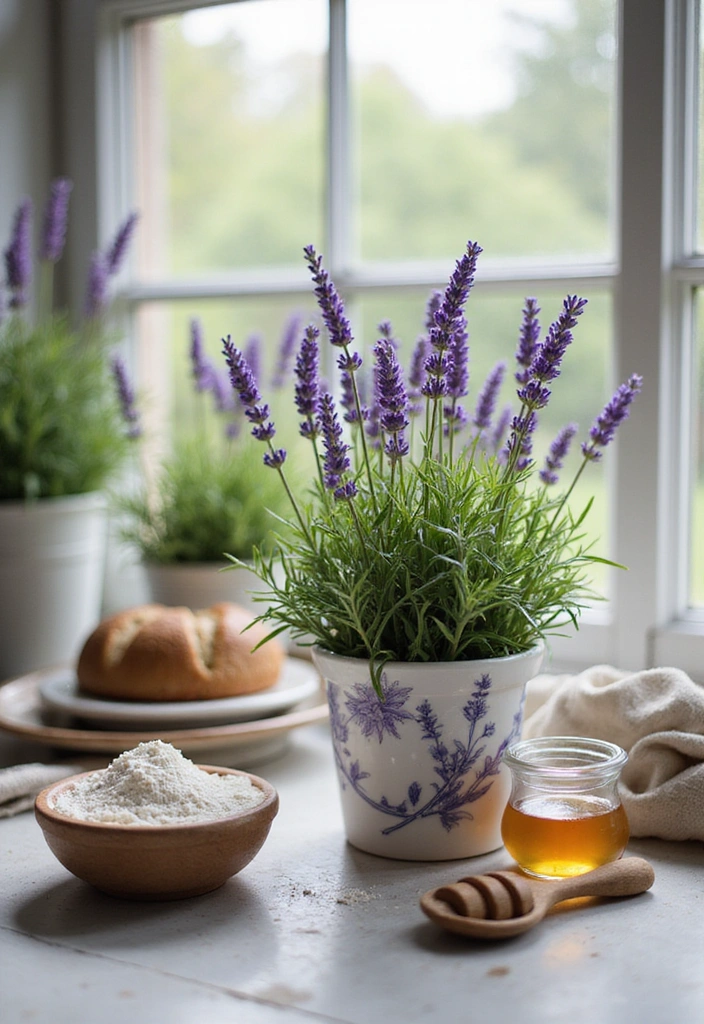
Lavender is not just for its beautiful flowers; it’s also a wonderful herb for cooking and aromatherapy. With its calming fragrance and delicate flavor, lavender can enhance a variety of dishes, from desserts to savory meals.
Lavender prefers well-drained soil and lots of sunlight, so ensure it has a bright spot in your kitchen. Water it when the soil feels dry, but avoid overwatering, as lavender does not like soggy roots.
Here are some tips for growing lavender:
– Prune the plant regularly to encourage bushy growth and maintain its shape.
– Use fresh or dried lavender in teas, cookies, and as a flavoring for meats.
– Consider pairing lavender with other herbs like rosemary for a beautiful herb garden.
Choose decorative pots that accentuate lavender’s beauty, adding a touch of serenity and elegance to your kitchen decor while inviting culinary creativity into your cooking.
11. Microgreens Marvel: Nutrient-Rich and Compact
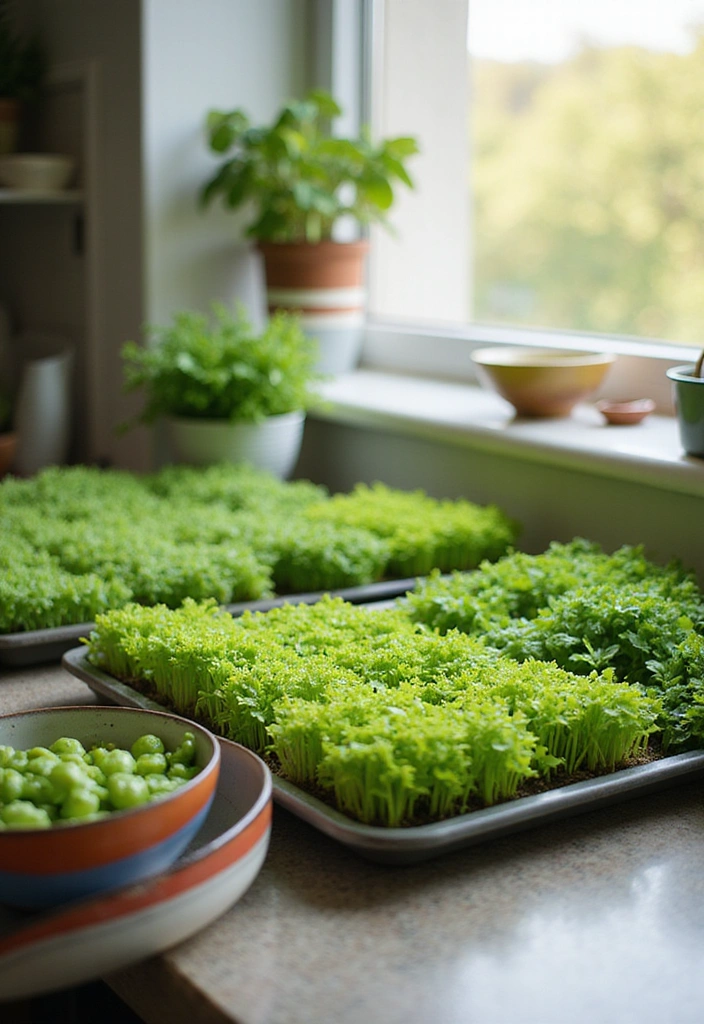
Microgreens are tiny, nutrient-packed plants that can be grown easily in small spaces. They’re perfect for adding a burst of flavor and nutrition to your meals.
These little greens can be grown in shallow trays on your kitchen counter, making them a fantastic choice for urban dwellers or anyone with limited space. Microgreens prefer bright, indirect light and should be watered daily to keep the soil moist.
Here are some tips for growing microgreens:
– Sow seeds densely and harvest them when they are about 1-2 inches tall.
– Use a variety of seeds, such as radish, arugula, and basil, for a colorful display.
– Add microgreens to salads, sandwiches, and smoothies for a nutrient boost.
Consider using decorative trays or containers that highlight the beauty of your microgreens, making them a delightful centerpiece in your kitchen while also serving a practical purpose.
12. Edible Flowers: A Colorful Touch
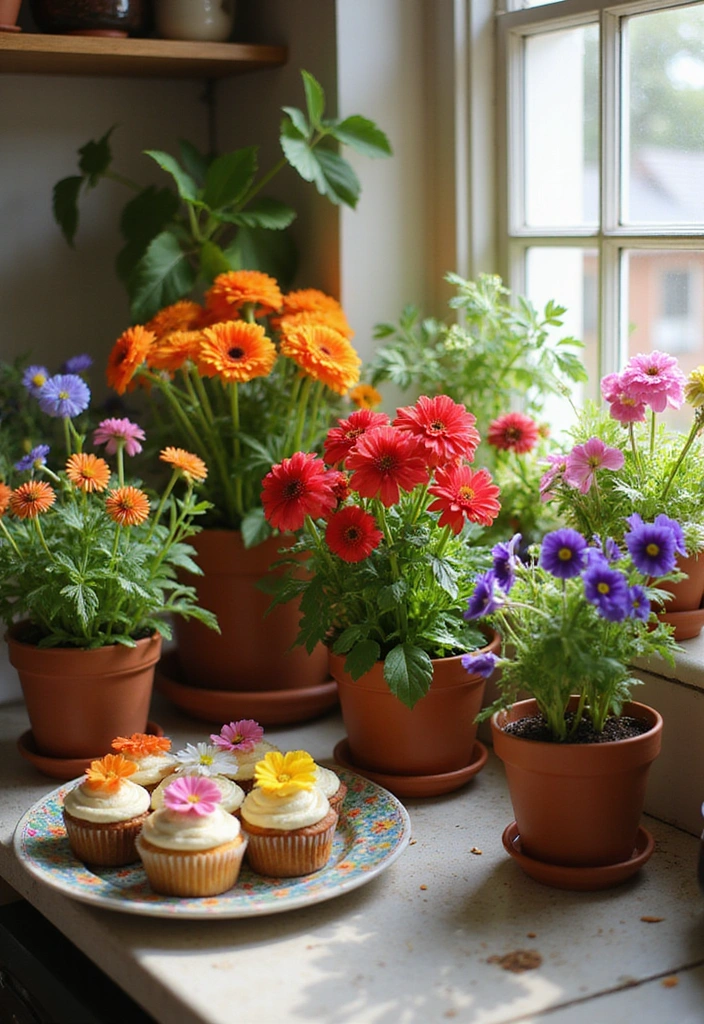
Edible flowers are a beautiful and unique addition to your kitchen garden. Not only do they add visual appeal, but many also add flavor to your dishes. Flowers like nasturtiums, pansies, and violets can be grown in pots or even as companion plants.
These flowers prefer sunny spots and well-drained soil. Water them regularly to keep the soil moist but not soggy, and make sure to harvest them frequently to encourage new blooms.
Here are some tips for growing edible flowers:
– Use fresh flowers in salads, desserts, or as garnishes for cocktails for a stunning presentation.
– Consider planting a variety of colors for a vibrant display in your kitchen.
– Research which flowers are edible and safe for consumption before planting.
Choose decorative pots that highlight the beauty of your edible flowers, adding a splash of color to your kitchen decor while inviting culinary creativity into your meals.
13. Vertical Gardens: Space-Saving Solutions
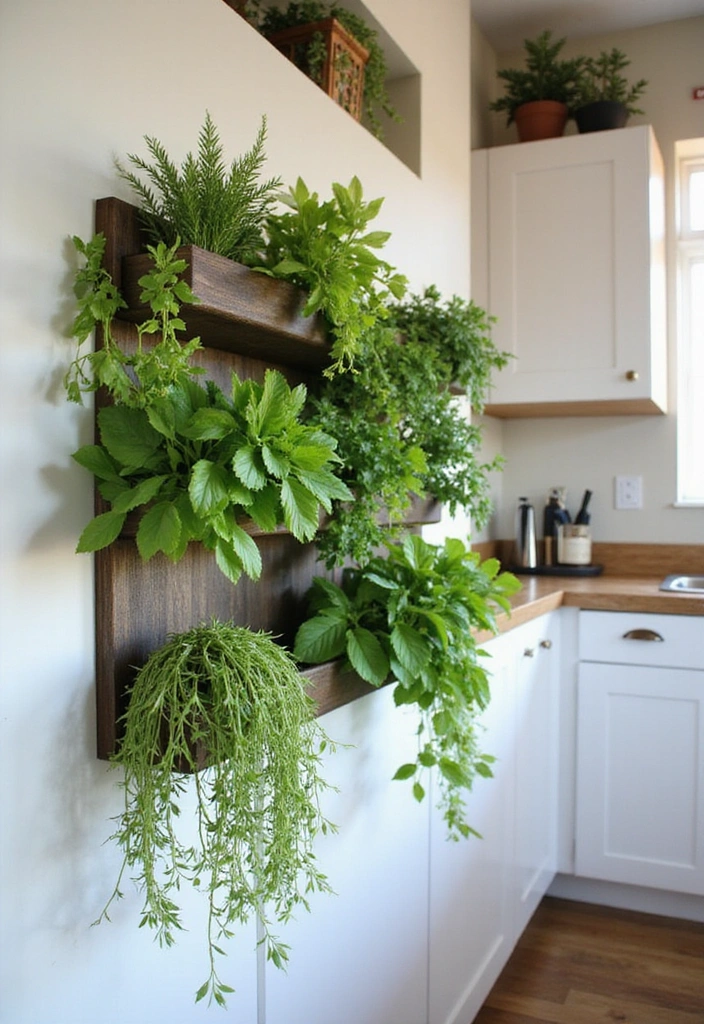
Vertical gardening is a fantastic way to maximize space in your kitchen while still enjoying a variety of herbs and plants. By using wall-mounted planters or hanging pots, you can create a stunning display that adds greenery to your kitchen without taking up counter space.
Vertical gardens thrive in bright, indirect light and require regular watering. Choose a variety of herbs that complement each other and are suitable for vertical growth, such as trailing herbs like oregano and thyme.
Here are some tips for creating a vertical garden:
– Use decorative wall planters that match your kitchen decor for a cohesive look.
– Ensure proper drainage in your planters to prevent overwatering.
– Incorporate herbs that have different growth habits for a dynamic visual display.
Consider using vertical gardens as a focal point in your kitchen, showcasing the beauty of nature while providing fresh ingredients for cooking.
14. Succulent Sensations: Low-Maintenance Options
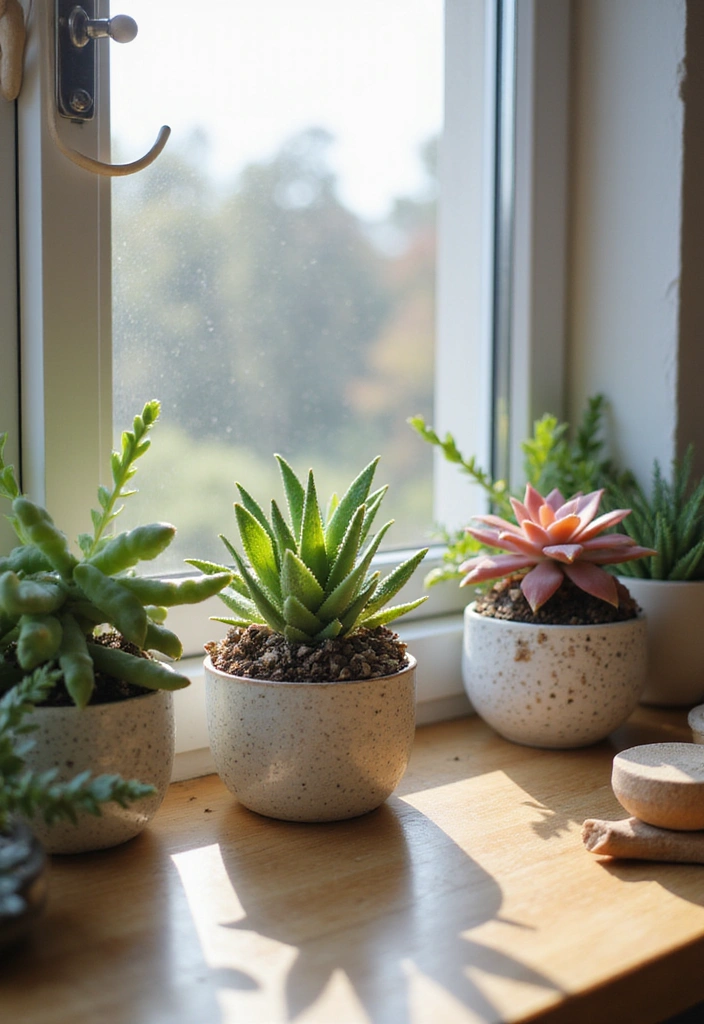
Succulents are a trendy and low-maintenance option for adding greenery to your kitchen. While they aren’t edible, they can complement your kitchen garden beautifully and add a touch of style. Succulents thrive in well-drained soil and prefer bright, indirect light, making them perfect for windowsills.
Here are some tips for caring for succulents:
– Water them sparingly, allowing the soil to dry out completely between waterings.
– Use decorative pots that highlight their unique shapes and colors.
– Consider grouping different types of succulents together for a stunning display.
Succulents can add a modern touch to your kitchen decor while being incredibly easy to care for, making them a fantastic addition to your indoor gardening collection.
15. Fresh Herbs on a Ladder Shelf: Creative Displays
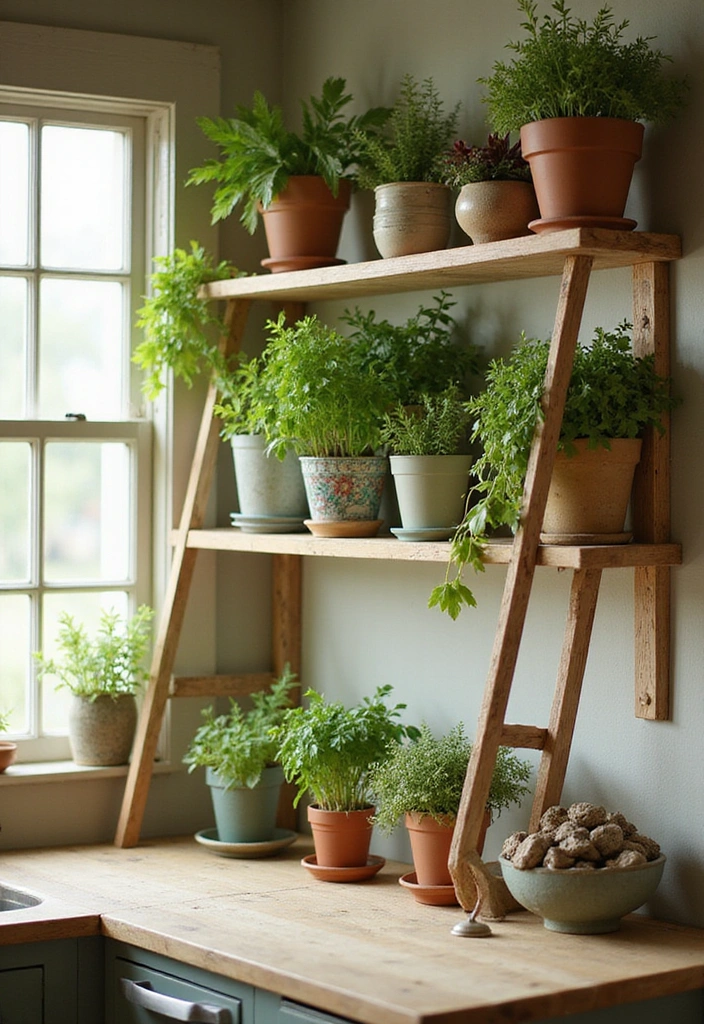
Utilizing a ladder shelf for your kitchen herbs is a creative way to display your plants while saving space. You can mix and match various herbs in decorative pots to create a visually appealing arrangement.
This setup not only looks great but also keeps your herbs accessible for cooking. Ensure the ladder shelf is placed in a bright area, and water the herbs according to their needs.
Here are some tips for using a ladder shelf for herbs:
– Use pots that vary in height and color for a dynamic display.
– Consider adding small decorative items to complement your herbs and enhance the visual appeal.
– Ensure good drainage for each pot to keep your herbs healthy.
A ladder shelf filled with fresh herbs can become a stunning focal point in your kitchen, inviting creativity and freshness into your cooking space.
16. Hanging Baskets: Suspended Greenery
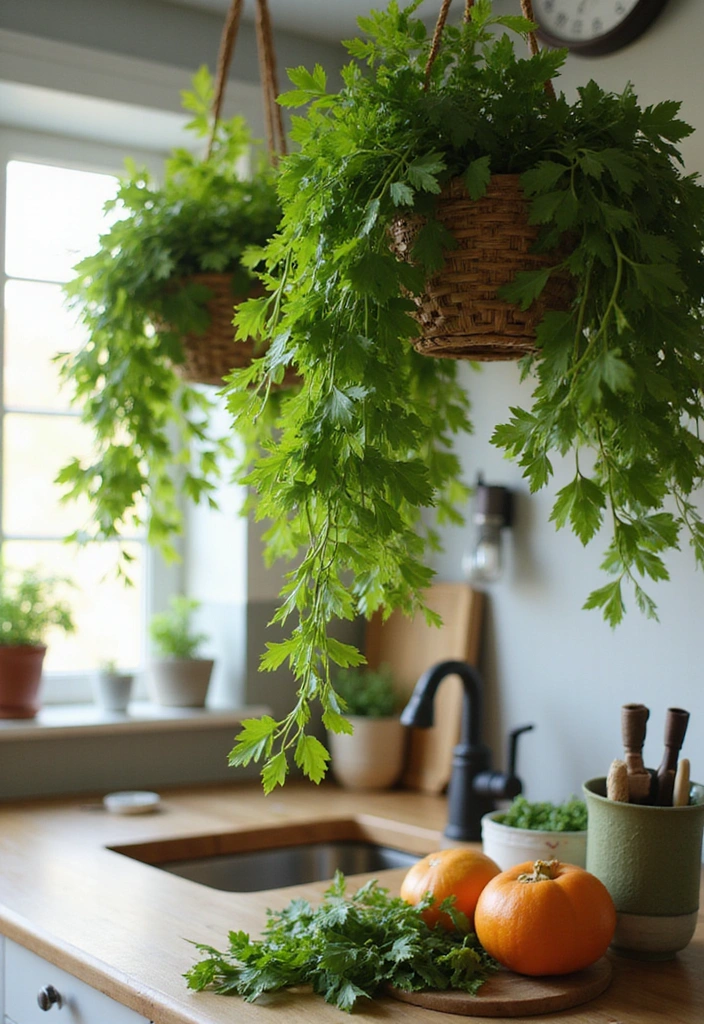
Hanging baskets are a stylish way to bring greenery into your kitchen while saving counter space. They can be filled with a variety of herbs or even flowering plants, creating a beautiful display that draws the eye upward.
These baskets thrive in bright, indirect light and require regular care to ensure the soil stays moist but not soggy.
Here are some tips for using hanging baskets:
– Choose lightweight pots to avoid overloading the hanging hardware.
– Consider using trailing herbs like parsley or chives for a beautiful cascading effect.
– Ensure good drainage to keep your plants healthy.
Hanging baskets filled with herbs or flowers can add a fun and whimsical touch to your kitchen decor, enhancing the overall aesthetic while providing fresh ingredients for your cooking.
17. Windowsill Herb Garden: The Perfect Spot
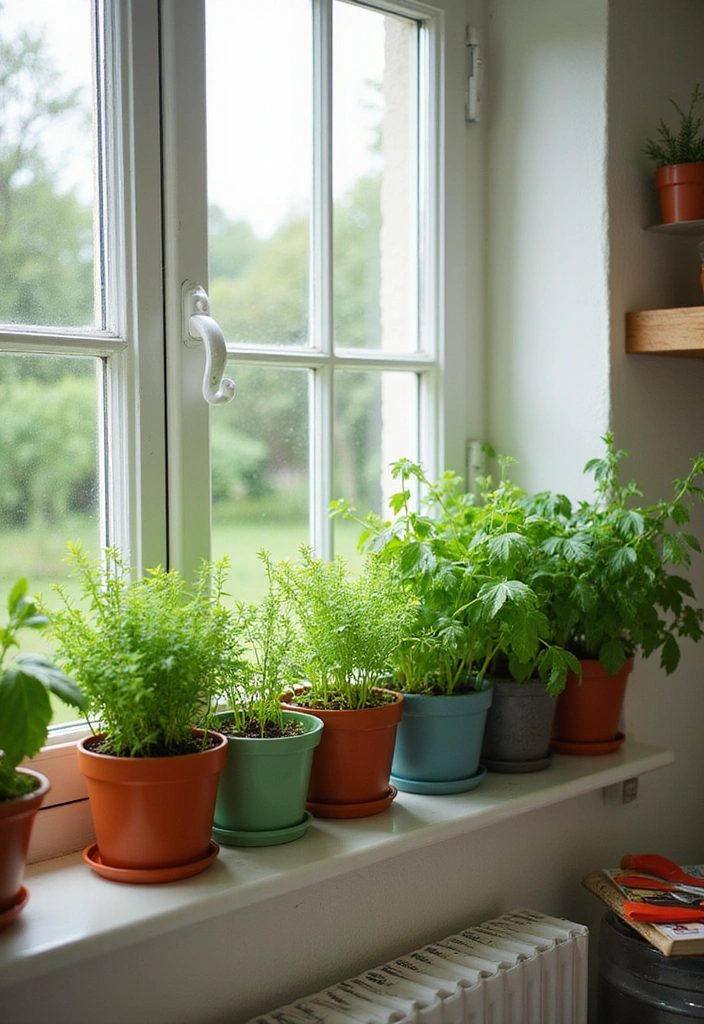
A windowsill herb garden is a classic choice for any kitchen. It utilizes the natural light and provides easy access to your favorite cooking herbs.
Choose a variety of herbs that thrive in sunlight, such as basil, parsley, and thyme, and arrange them in decorative pots that match your kitchen decor. Regular watering and trimming will help keep your herbs healthy and productive.
Here are some tips for creating a successful windowsill herb garden:
– Group herbs with similar light and water needs together.
– Use colorful pots to add personality to your windowsill.
– Consider adding small labels to identify each herb for easy reference.
A windowsill herb garden not only beautifies your kitchen but also provides fresh ingredients at your fingertips, encouraging culinary creativity every day.
18. Repurposed Containers: Eco-Friendly Gardening
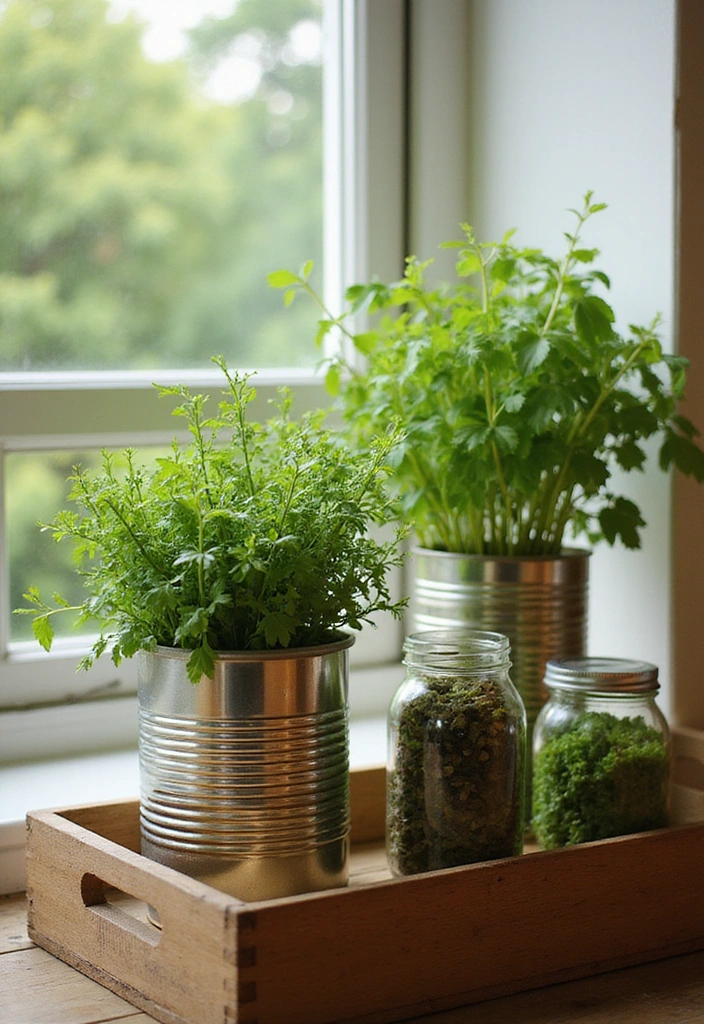
Repurposing containers for your kitchen garden is a creative and eco-friendly way to grow herbs. You can use old jars, tin cans, or wooden crates to create unique planters that reflect your personal style.
Ensure that the containers have drainage holes and are suitable for the herbs you want to grow. Regular watering and appropriate sunlight will help your plants thrive.
Here are some tips for using repurposed containers:
– Clean and prepare containers properly before planting.
– Use colorful paints or embellishments to personalize your containers.
– Consider grouping different containers for a visually appealing display.
Repurposed containers not only reduce waste but also add character to your kitchen garden, inviting creativity into both your gardening and cooking experiences.
19. Herb Spiral: A Unique Gardening Technique
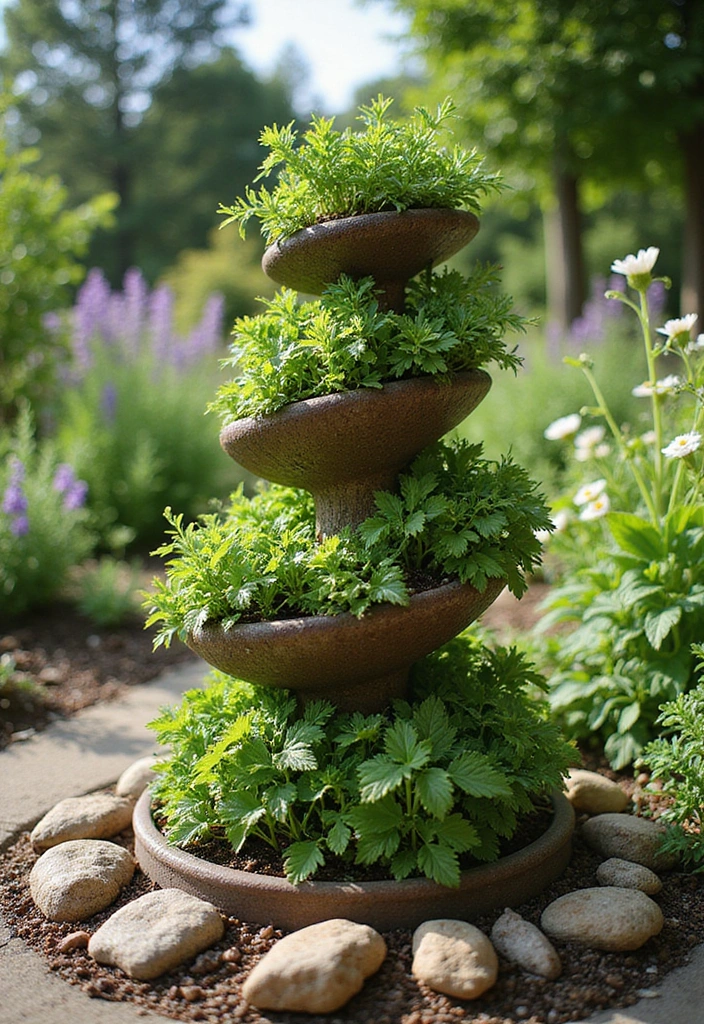
An herb spiral is a unique gardening technique that maximizes space while creating a visually stunning display. It consists of a spiral-shaped garden bed that allows you to grow various herbs in a compact area.
The spiral design provides different microclimates, allowing you to cultivate herbs that require varying amounts of sunlight and moisture. This makes it an excellent choice for any kitchen garden.
Here are some tips for creating an herb spiral:
– Use stones or bricks to build the spiral structure.
– Plant herbs according to their sunlight and water needs, placing sun-loving herbs at the top.
– Incorporate decorative elements like rocks or flowers to enhance the spiral’s appearance.
An herb spiral not only adds a creative touch to your kitchen garden but also provides fresh herbs for cooking while being a conversation starter in your home.
20. Seasonal Herb Rotations: Freshness Year-Round
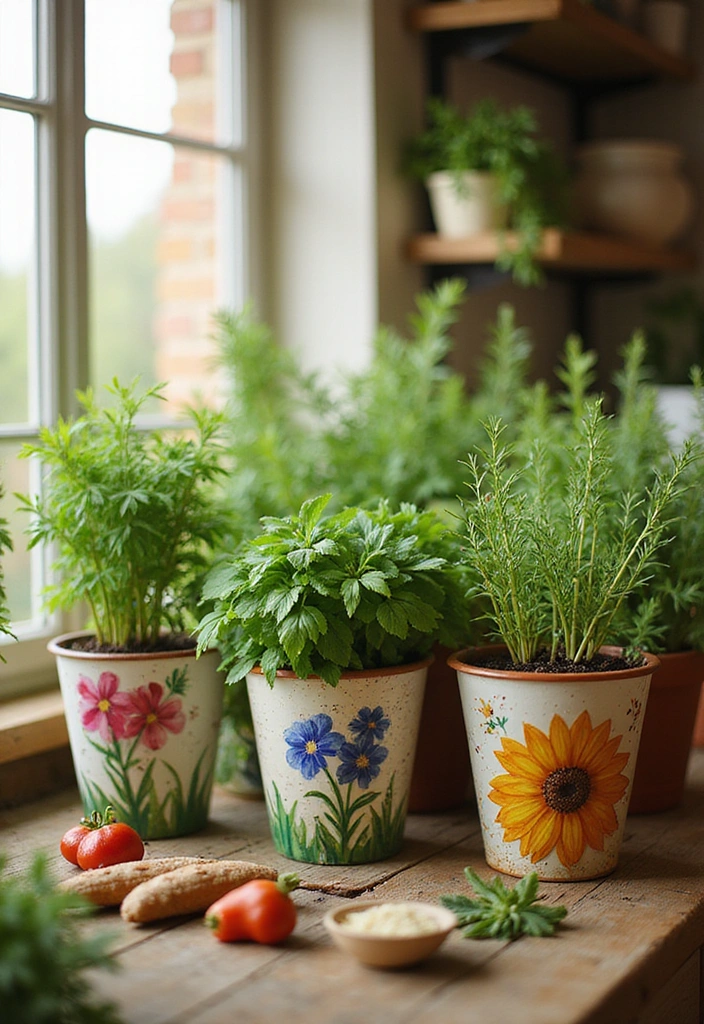
Implementing seasonal herb rotations in your kitchen garden ensures you have fresh ingredients throughout the year. By planting different herbs according to the seasons, you can enjoy a constant supply of flavors for your cooking.
Choose herbs that thrive in each season, such as basil in summer and rosemary in winter. This approach not only keeps your garden fresh but also allows you to experiment with different flavors.
Here are some tips for successful seasonal herb rotations:
– Research which herbs grow best in each season for your climate.
– Keep a gardening journal to track your plantings and rotations.
– Use decorative pots that reflect the season’s theme for added charm.
Seasonal herb rotations can help you maximize your kitchen garden’s potential while providing fresh ingredients for every culinary adventure.
21. Herb Salad Garden: A Flavorful Mix
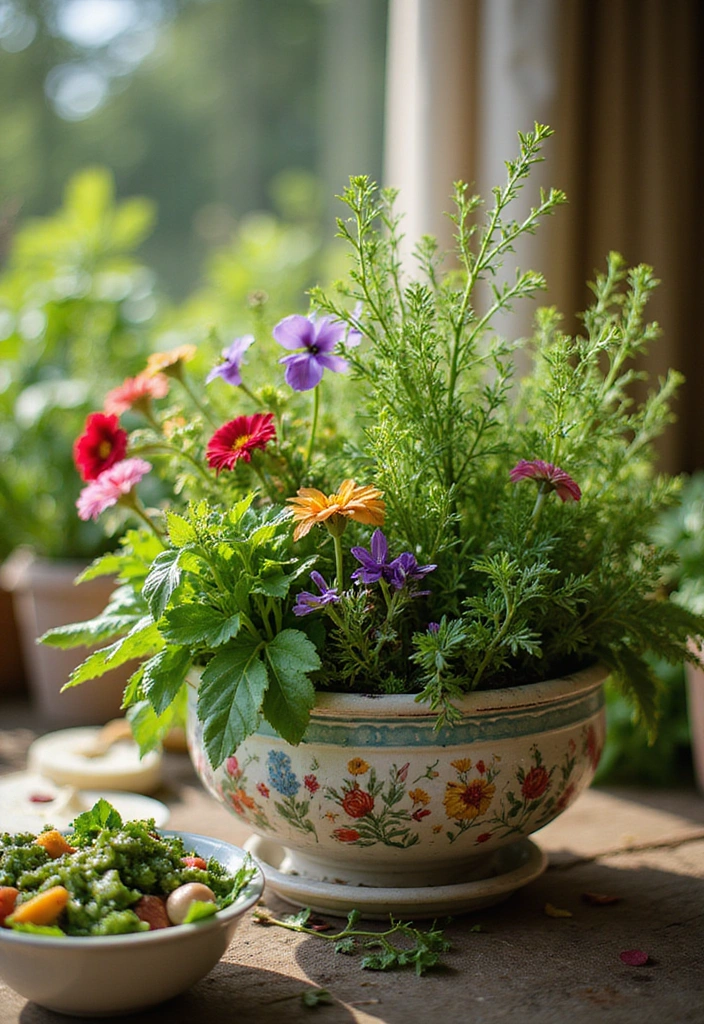
Creating an herb salad garden is a fun and flavorful way to combine multiple herbs in one space, perfect for culinary enthusiasts. You can plant a variety of herbs together that complement each other’s flavors, creating a vibrant salad that’s both beautiful and delicious.
Choose herbs like basil, parsley, and cilantro, and arrange them in a decorative planter. Ensure they have adequate sunlight and water for optimal growth.
Here are some tips for creating an herb salad garden:
– Select herbs with different textures and colors for a visually appealing mix.
– Use fresh herbs in salads, dressings, and garnishes for a flavor boost.
– Consider adding edible flowers for a pop of color and flavor.
An herb salad garden not only enhances your kitchen decor but also provides fresh ingredients for your meals, encouraging culinary creativity with every harvest.
22. Windowsill Sprouts: Quick Growth and Freshness
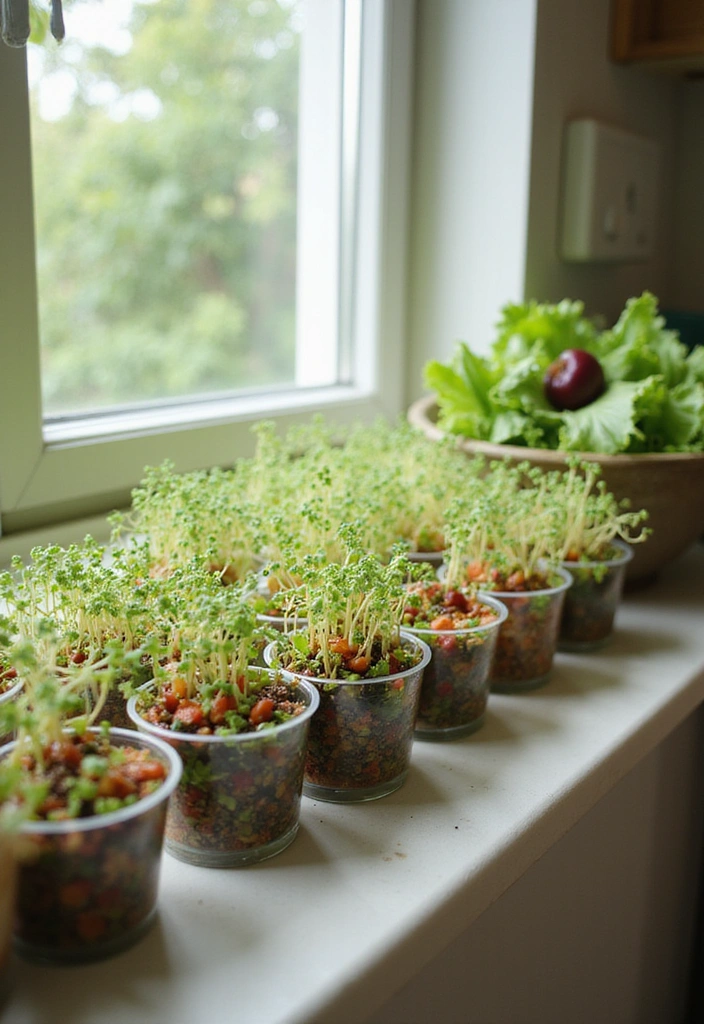
Growing sprouts on your windowsill is an easy and quick way to enjoy fresh greens. Sprouts like alfalfa, broccoli, and radish can be grown in small containers and are packed with nutrients.
These tiny greens thrive in low-light conditions and require minimal care, making them perfect for busy kitchens. Just make sure to rinse them regularly to keep them fresh and healthy.
Here are some tips for growing sprouts:
– Use shallow containers with good drainage for optimal growth.
– Rinse sprouts daily to keep them clean and flavorful.
– Add sprouts to sandwiches, salads, and wraps for added crunch.
Windowsill sprouts add an element of freshness to your kitchen while being a nutritious addition to your meals.
23. Indoor Gardening Workshops: Learning and Growing
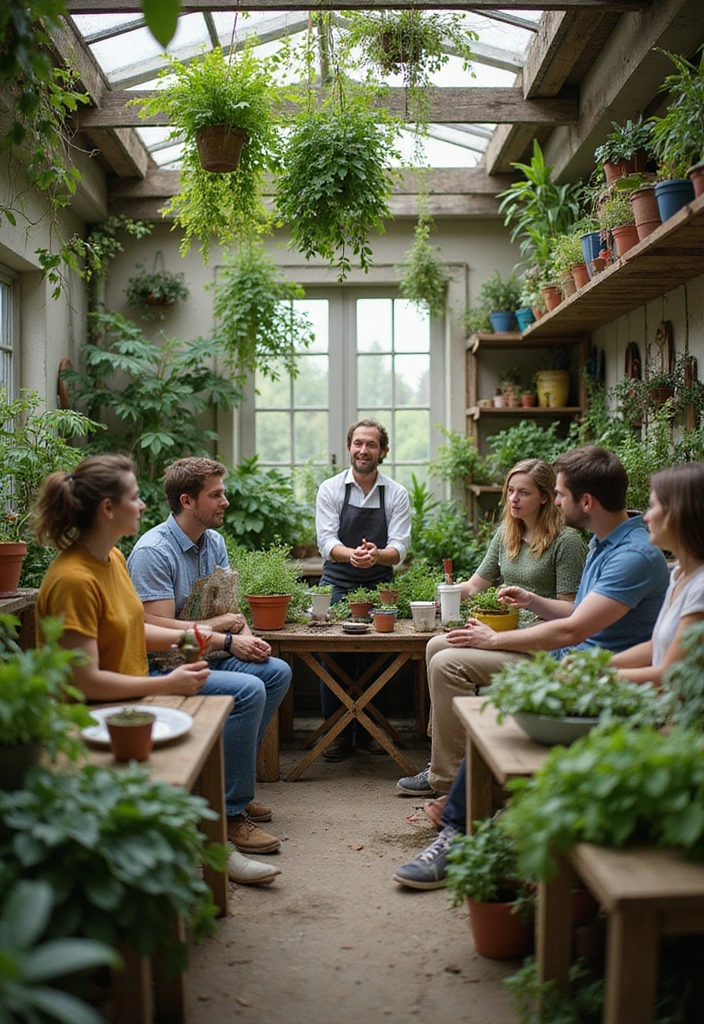
Participating in indoor gardening workshops is a fantastic way to learn about growing herbs and plants in your kitchen. These workshops provide valuable insights into plant care, design ideas, and gardening techniques that can enhance your indoor garden.
You can connect with local gardening communities, share experiences, and learn from experts. Workshops often cover topics like pest control, soil health, and seasonal planting.
Here are some tips for finding workshops:
– Look for local gardening clubs or community centers that host events.
– Check online platforms for virtual workshops that you can attend from home.
– Consider organizing your own workshop with friends to share knowledge and experiences.
Participating in indoor gardening workshops can inspire you to create a beautiful and productive kitchen garden while fostering a sense of community among fellow gardening enthusiasts.
Conclusion: Cultivating Your Indoor Edible Garden
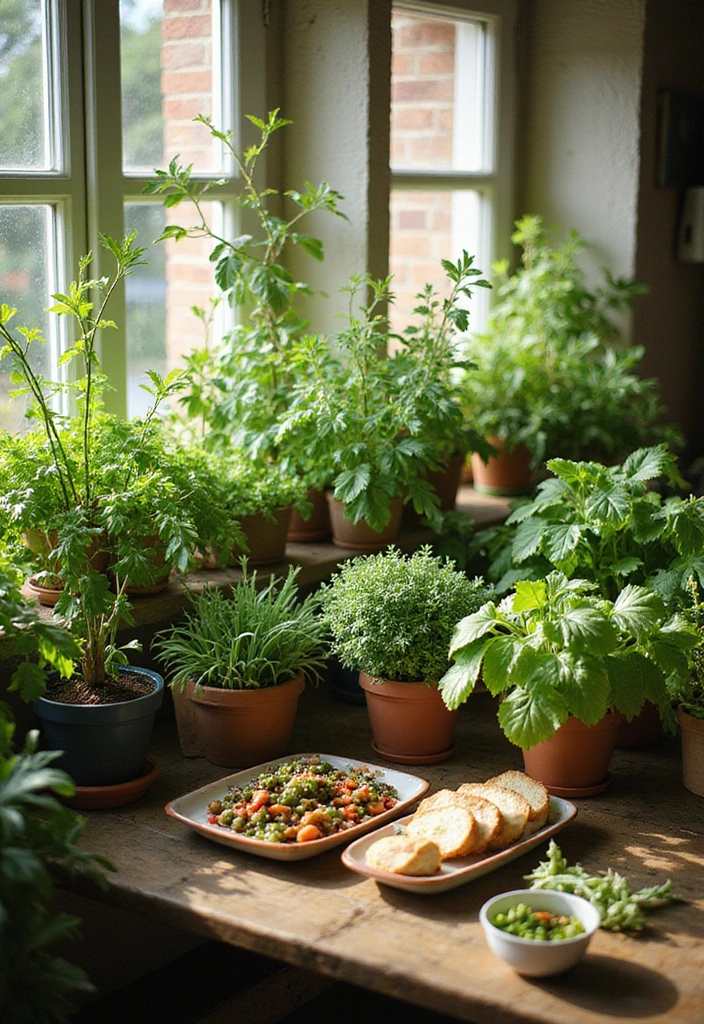
Transforming your kitchen with indoor edible plants is a rewarding journey that brings beauty and flavor into your home.
Whether you choose to grow herbs, microgreens, or even edible flowers, each plant adds a unique touch to your cooking and decor.
Embrace the joy of nurturing your indoor garden, and let it inspire your culinary creativity every day.


